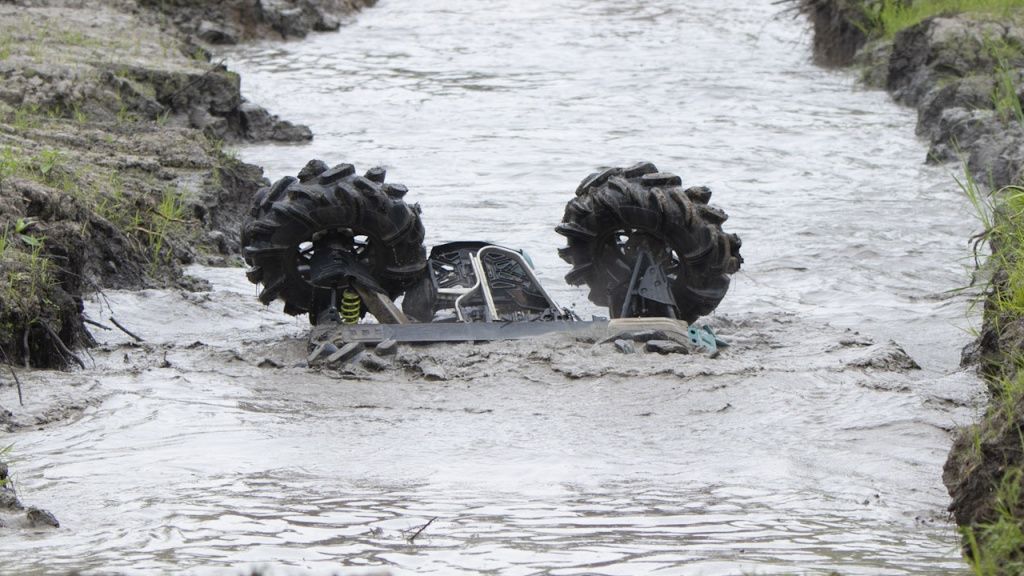Who doesn't love big wheels? But which ones to choose and how to install them? See the article for tips on how to.
Perhaps the first real modification that new ATV owners think about is upgrading to bigger tires. In this article, we’ll look at why you might decide on bigger tires for your ride while also considering the potential downsides. Finally, we’ll look at how to choose the perfect size of tire for your needs.
CAN YOU INSTALL BIGGER TIRES ON YOUR ATV?

It’s possible to put bigger tires on any ATV, but that doesn’t necessarily mean you should. The stock tire size of your ATV has been chosen by the manufacturer to perfectly match the engine size, transmission, driveline, and suspension of your vehicle.
Switching to bigger tires alters these proportions. It’s possible to unbalance your ATV or put extra stress on specific components.
WHAT BENEFITS DO THEY DELIVER?

So, why do people want bigger tires if they can cause issues? Well, the stock tires of an ATV are usually for general use and can even be used for mud riding and rock crawling. But they don’t excel in any of these areas. For the best mud running, you’ll need mud tires. When rock crawling, for the best performance, you need grippy tires.
Bigger tires can make your ATV look super cool. A raised ATV with larger tires looks the part. But more importantly, you gain extra ground clearance. You can more easily clear rocks, stumps, and uneven terrain, allowing you to ride more aggressively in these conditions. And larger tires can offer better traction in mud, sand, and snow.
OK, now your four-wheeler can go through the deepest mud and extremely uneven terrain. But will you, if necessary? Choose high-ankle heavy-duty wading boots for the best protection and stable grip.
ARE THERE ANY NEGATIVE FACTORS ON ATV PERFORMANCE?

There’s a trade-off on ATV performance when you install bigger tires. Without installing a lift kit or trimming the fenders, you’ll have less clearance between the tires and the bodywork or frame. This can result in rubbing. The easiest way to get around this is to install a lift kit.
Because your bike will now have a higher center of gravity, it’s much more likely to tip over. If you only increase your tire size a little, you can compensate with wheel spacers that widen the ATV slightly. Wider wheels can also offset the additional height, as can a lift kit with a wide stance. All of these things can help your higher ATV re-gain stability.
Torque loss is perhaps the biggest downside of installing larger tires. Because the tires weigh more and have a bigger circumference, more power is required fr om the engine to drive them. With a large tire size, it can feel like you’re riding in a higher gear at all times.
To compensate for this torque loss, you can install a clutch kit and/or gear reduction kit. A clutch kit changes when the clutching phase happens and aids the most in high-speed riding. A gear reduction kit is the better option if you want to recover torque at slow speeds, such as when rock crawling.
As you might expect, these modifications can put extra strain on other components. The driveline needs to work harder. Installing a heavy-duty clutch belt when you upgrade your tires makes sense.
The increased angle can put enormous stress on CV joints in the suspension, too. Without careful calibration, the suspension gets additional wear and tear and can even blow out if pushed to the limit while at an extreme angle.
The bigger the tires you choose, the more useful heavy-duty axles and CV joints become. The stock shocks your ATV came with isn’t designed to take a larger tire, though you can probably go up one or two tire sizes before replacement suspension becomes a requirement.
HOW TO CHOOSE THE RIGHT SIZE OF ATV TIRE

The height of all your new ATV tires should be the same, though you can choose different widths for the front and rear tires. Tire width is most important than tire height in some applications. You want a tall, narrow tire for mud, and a wide tire for snow, for example.
As a general rule, the stock tire size offers good (but not outstanding) performance in all applications. For technical riding and rock crawling, an increase of up to two inches can offer the ground clearance you need. Mud bogging benefits from much taller tires, whereas dune, trail, and snow riding benefit from wider tires.
















